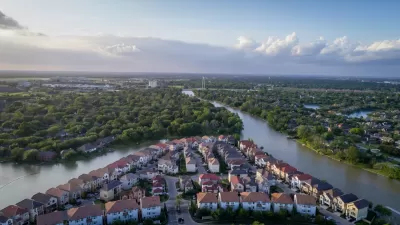A recent article describes the context of urbanization around the country before examining the implications of the trend for the decisions made by bankers—i.e., where and how to invest—especially given the realities of the post-recession economy.
A recent article by John Engen for American Banker manages a lot of tasks. First comes the work of citing the relevant facts regarding the trend of migration toward U.S. urban centers. To do so, Engen cites the growth of urban centers around the country between the years 2010 and 2012: “In total, 16 of the 20 largest U.S. cities experienced growth rates faster than their surrounding suburbs between 2010 and 2012, according to census data.”
Then Engen goes on to describe the implications fo the trend to the business decisions of banks—not only where and how to invest, but how to structure the bricks and mortar assets of business operations. “For banks, the budding movement of people and businesses to the cities is playing out against a backdrop of sluggish economic growth, harsher regulatory oversight, rapid technological change and earnings pressure. Cost controls are a priority, which dovetails nicely with the behavior of younger city dwellers, who generally are comfortable accessing their banks online or via mobile devices rather than visiting branches.,” writes Engen. Engen quotes a variety of executives and analysts on the subject of how urbanization might influence future practices of the banking industry. Some examples:
- “‘Whatever growth we're seeing in cities clearly matters less than it would have a decade ago, simply because of the adoption of digital channels,’ says David Stein, executive vice president and head of retail banking for Green Bay, Wisc.-based Associated Banc-Corp, which competes in Chicago, Minneapolis and Milwaukee.”
- “Clayton Baker, head of consumer financial advisory services for Ernst & Young, acknowledges the recent bump in urban populations but says he knows of no set ‘urban strategy’ for banks, no blueprint to follow for success. Banking is banking, to a certain extent. ‘There isn't just a model you can overlay on an urban market,’ he says.”
- “‘We put out a caution to our lenders two years ago: When it comes to multifamily, you've got to be very careful,’ says Joseph Hoesley, vice chairman for commercial real estate at U.S. Bancorp, which has been lending to more city projects in recent years.”
FULL STORY: Hot in the City

Alabama: Trump Terminates Settlements for Black Communities Harmed By Raw Sewage
Trump deemed the landmark civil rights agreement “illegal DEI and environmental justice policy.”

Study: Maui’s Plan to Convert Vacation Rentals to Long-Term Housing Could Cause Nearly $1 Billion Economic Loss
The plan would reduce visitor accommodation by 25% resulting in 1,900 jobs lost.

Planetizen Federal Action Tracker
A weekly monitor of how Trump’s orders and actions are impacting planners and planning in America.

Wind Energy on the Rise Despite Federal Policy Reversal
The Trump administration is revoking federal support for renewable energy, but demand for new projects continues unabated.

Passengers Flock to Caltrain After Electrification
The new electric trains are running faster and more reliably, leading to strong ridership growth on the Bay Area rail system.

Texas Churches Rally Behind ‘Yes in God’s Back Yard’ Legislation
Religious leaders want the state to reduce zoning regulations to streamline leasing church-owned land to housing developers.
Urban Design for Planners 1: Software Tools
This six-course series explores essential urban design concepts using open source software and equips planners with the tools they need to participate fully in the urban design process.
Planning for Universal Design
Learn the tools for implementing Universal Design in planning regulations.
Caltrans
Smith Gee Studio
Institute for Housing and Urban Development Studies (IHS)
City of Grandview
Harvard GSD Executive Education
Toledo-Lucas County Plan Commissions
Salt Lake City
NYU Wagner Graduate School of Public Service





























